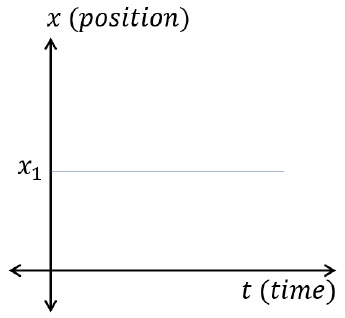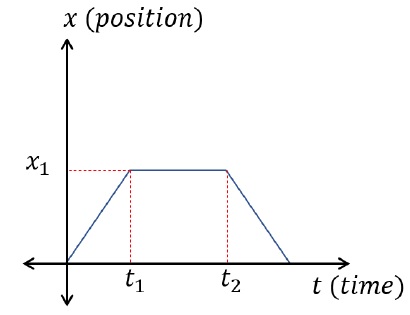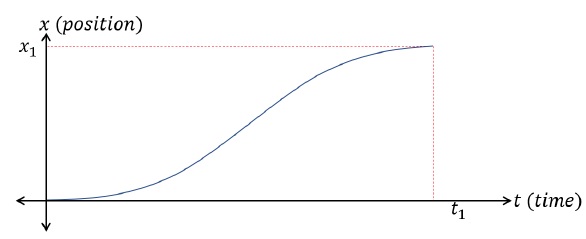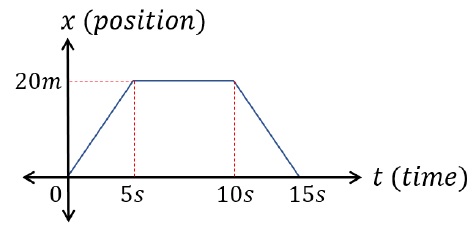Position Time Graph
Description:
The Concept
Position – Time graphs display the motion of a particle by showing the changes of velocity with respect to time.
For Example,

Above position – time graph represents an object at rest at position x1, in positive direction.

Above position – time graph represents particle going at uniform velocity in positive direction until, t = t1, it stops moving. Finally, it changes direction and starts moving with uniform velocity, v1, in opposite direction.
Sailent Points
Position – Time graphs are also called x − t graphs.
Slope of Position – Time graph gives instantaneous velocity.
Slope of any curve = dydx (Revisit Differential Calculus for more details)
Slope of position-time graph = dxdt = inst.velocity
Also, from previous topic,
inst speed = magnitude of inst.velocity
Example Problem 1
Comment on the motion path taken by the car using the x − t graph

Solution
We know that the slope of x − t graph represents velocity.
The object starts from rest (because initially the curve is flat, hence slope = 0) at x = 0, and eventually increases speed to a specific value. It stays on that speed for a period of time (constant slope part of the curve) after which it decelerates slowly and comes to rest at position, x = x1.
(See video for animation)
Note − It is important to note that sharp peaks are not possible in any of graphs plotted between kinematic quantities in real life. This essentially means, objects don’t move or come to stop abruptly, rather, they do the same gradually. Hence, the smoothness of graph is always maintained.
Example Problem 2
Comment on the motion path taken by the car using the x − t graph.

Solution
Velocity in the first 5s, v = dxdt = 20 - 05 - 0 m/s = 4 m/s
Velocity in between 5s and 10s, v = dxdt = 20 - 2010 - 5 m/s = 0m/s
Velocity in between 10s and 15s, v = dxdt = 0 - 2015 - 10 m/s = -4 m/s

